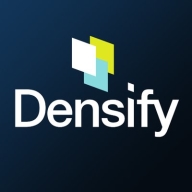

Densify and Azure NetApp Files are competing in the cloud optimization space. Densify is preferred for cost management, while Azure NetApp Files has an edge in Azure integration and performance.
Features: Densify offers real-time resource optimization with insights for cloud efficiency, integrated ITSM/EA applications, and the ability to forecast resources for better planning. Azure NetApp Files provides seamless Azure integration, ultra-fast SQL backup and restore, and SnapMirror for data protection and replication.
Room for Improvement: Densify could enhance multi-cloud support, improve intuitive dashboard interfaces, and refine integration with analytics tools for more real-time insights. Azure NetApp Files might develop more competitive pricing structures, extend flexibility beyond Azure to other platforms, and enhance support for non-Azure environments.
Ease of Deployment and Customer Service: Densify is known for its user-friendly deployment and robust customer support, aiding in smooth integration with current systems. Azure NetApp Files benefits from strong integration within Azure, making it more straightforward for Azure users but may need improved support for non-Azure-related queries.
Pricing and ROI: Densify offers competitive pricing with potential for strong ROI through cloud optimization savings. Azure NetApp Files is perceived as more expensive but delivers ROI through enhanced performance and Azure integration, beneficial for businesses committed to the Azure platform.


Azure NetApp Files is designed for unstructured data, virtualized SAP systems, SQL backups, NFS and CIFS protocols, Azure Virtual Desktop storage, and optimizing file share services. It supports high performance and networking integration in Microsoft Azure.
Azure NetApp Files offers features such as SnapMirror for data protection, rapid provisioning, elastic scaling, and ultra-fast SQL backup and restore. It provides a seamless experience with fast snapshotting, high availability, security, and ease of setup. Users benefit from significant performance improvements and the ability to manage substantial workload migrations effortlessly. This service is ideal for environments like Azure Kubernetes Service and cloud EPM platforms, where speed, flexibility, and performance are crucial.
What are the key features?Azure NetApp Files is implemented in various industries requiring robust file storage solutions, from educational environments where performance boosts are critical to businesses leveraging Azure Kubernetes Service for containerized applications. It supports high-demand environments, optimizing data management and improving efficiency.
Densify is a hybrid cloud and container resource management platform that makes workloads self-aware of their precise resource requirements and automates the resource management and selection process. This solution helps you control your cloud spend and also helps your apps perform and scale better. Densify enables you to match your cloud requirements with the optimal cloud supply. Additionally, Densify is the only technology that leverages patented, predictive machine learning-powered analytics to perform advanced modeling of workload patterns, and provide precise optimization directives. It is ideal for cloud engineers, container platform owners, and IT finance.
Densify works by:
Densify Features
Densify has many valuable key features. Some of the most useful ones include:
Densify Benefits
There are many benefits to implementing Densify. Some of the biggest advantages the solution offers include:
We monitor all Cloud Migration reviews to prevent fraudulent reviews and keep review quality high. We do not post reviews by company employees or direct competitors. We validate each review for authenticity via cross-reference with LinkedIn, and personal follow-up with the reviewer when necessary.